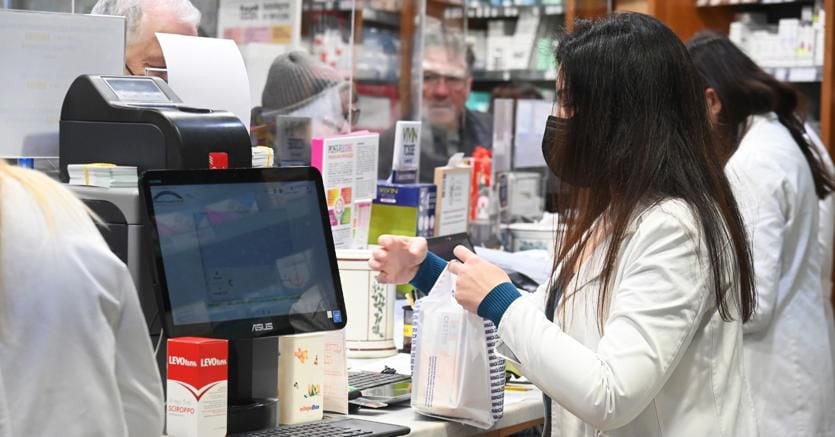The race for drugs for Covid and flu, now that the two viruses are at their seasonal peak, is causing difficulties in finding some medicines: among these are Brufen, the anti-inflammatory and pain reliever par excellence, but also, for example, Tachiprina especially in the formulation syrup as well as some antibiotics for bacterial forms such as Augmentin or Zithromax. Pharmacists and industries, however, reassure: the drugs are there and if someone is missing, you can get a prescription for an equivalent “non-brand” (the generic). It is a pity that their prescription and sale does not take off: they still represent only 30% of the market, a percentage which in the case of anti-inflammatories drops to 12%.
Sales boom for analgesics and anti-inflammatories
To certify this real race for these medicines are the data just published by Iqvia, a global provider of data and analysis in the healthcare and pharmaceutical fields. In 2022, the sale of pain relievers and anti-inflammatories in pharmacies, such as paracetamol, aspirin and ibuprufene, increased by 40% to 288 million euros. Similarly, cough products, such as syrups, also saw a 78% increase in 2022, reaching a value of 388 million. An increase that occurred above all in the last few weeks of the year and “despite the fact that many of these drugs, which are also useful as antifebrile drugs, have been affected by shortages”, underlines Iqvia. Which underlines how 2022 was a year of recovery for the pharmacy in Italy with an increase in values of 4.6%, compared to 2021, to 25.7 billion euros (in volumes the growth was 4.4% ). On the other hand, the drop in the sale of masks compared to 2021 (-34%) and of hand sanitizers (-44%) was noticeable, while the sale of rapid tests for Covid in 2022 increased by 88%, with a peak in December coinciding with flu season.
The alternative of generics which, however, do not take off
In these days when the alarm has sounded, both the drug agency and pharmacists are repeating in chorus that for every drug that is in shortage it is possible to find a generic correspondent. The problem, however, is that in Italy there has always been a low propensity of doctors to prescribe generic drugs, indicating on the prescription only the name of the active ingredient and not the brand name (for example, paracetamol instead of tachyprine), but also of the same patients who are often fond of the branded drug despite the fact that the equivalent drug is completely identical since it is a “copy” of the branded one whose patent has expired. A short circuit certified by the numbers: according to the elaborations of Egualia (which represents the manufacturers of generics) based on Iqvia data, generics represent only 30% of the market (in the North it rises to 38%) against a European average that exceeds 50% hundred. The gap between branded and generic medicines is even more evident in the case of anti-inflammatories, for example: according to Egualia’s elaborations on Iqvia data, generics represent 12.4% compared to 87.6% of the designer brands. And so, for example, Brufen represents 84.7% of sales against 15.3% of the generic (Ibuprofen is the name of the active principle). Nimesulide is doing a little better where the generic is worth 34.4 percent.
The recipe node and the production cost alarm
What weighs on the use of generics – cheaper than branded ones – is first of all the fact that doctors do not always indicate the active ingredient of the molecule instead of the trade name on the prescription. In reality, a 2012 law is quite clear on this point because it obliges the doctor to always indicate the active ingredient on the prescription, but it also recognizes the doctor’s right to also indicate the name (brand or generic) of the medicine based on the same active principle thus judging it irreplaceable. In this way, branded medicines are back on track despite the almost always cheaper generic alternative. Among other things, the same law discharges the difference in price between generic and branded products onto citizens. It’s not all second Enrique Hausermann, president of Egualia, to weigh on the shortage there is also a problem of “industrial sustainability” that has been dragging on for years “in order not to risk much more serious and insurmountable critical issues and shortcomings”. For Egualia, nodes such as “price renegotiation, revision of the tender criteria, reform of the system for reporting shortages and reshoring and nearshoring policies to avoid supply interruptions” must be addressed.
